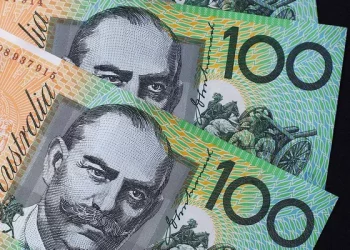The Thai Baht, represented by the symbol ฿ and the ISO code THB, is the official currency of the Kingdom of Thailand. It is one of Southeast Asia’s most recognized and stable currencies, used daily by millions of Thais and tourists alike. Understanding why Thai money is called baht offers insight into the country’s rich history, linguistic evolution, and cultural heritage. This guide explores the origins, historical transformations, and significance of the baht in Thai society.
1. Historical Background of Thai Currency
Thailand’s monetary history dates back centuries, long before the country adopted the baht in its current form. In ancient times, barter was the primary mode of trade, but eventually, various forms of currency began to emerge. Initially, Thailand used objects such as cowrie shells and metal tokens for transactions.
Over time, more standardized systems came into play, influenced by trade and contact with neighboring regions such as India and China. By the Sukhothai and Ayutthaya periods (13th to 18th centuries), Thailand had already started to develop more formalized currency systems. The transformation from bartering to using metallic units helped lay the foundation for the baht.
2. Origin of the Term “Baht”
The word “baht” originally referred to a unit of weight. It comes from the Sanskrit word “bhāra,” meaning weight or burden. In ancient Siam (Thailand’s former name), baht was used to measure precious metals like silver and gold. One baht equaled approximately 15 grams of silver or gold, depending on the historical period.
This system gradually evolved as people began to associate the weight unit directly with monetary value. As a result, “baht” transitioned from a unit of mass to the name of the official currency. This transition was not abrupt but took place over many centuries, culminating in formal recognition during the reign of King Chulalongkorn (Rama V) in the late 19th century.
3. The Role of King Chulalongkorn in Currency Reform
King Chulalongkorn played a vital role in modernizing Thailand’s financial and administrative systems. One of his most significant reforms was the standardization of the Thai currency. Before his reign, various regional currencies and inconsistent standards made trade and governance challenging.
Under his directive, the baht was adopted as the national currency, and minting practices were standardized. In 1897, the government established the Thai Mint, and by 1902, Thailand had joined the gold standard. The term “baht” was officially used to describe both the weight and the monetary unit, linking the traditional system with modern financial principles.
4. Evolution of Thai Currency Units
Thailand’s monetary system has undergone several transformations. Initially, the baht was divided into smaller units:
- 1 Baht = 4 Salung
- 1 Salung = 25 Satang
Although salung coins are rarely used today, satang remains part of the current system. Coins in denominations of 25 and 50 satang still exist but are primarily used in banking transactions or with government fees.
The gradual phasing out of smaller units reflects inflation and changes in consumer behavior. However, understanding these units provides insight into how the baht system was structured and how it has changed over time.
5. Symbol and ISO Code of the Baht
The Thai baht is symbolized by ฿, a stylized Thai character that combines tradition with modern utility. The symbol is used primarily within Thailand and by currency exchanges worldwide. The ISO code for the baht is THB, a globally recognized standard that facilitates international trade and financial reporting.
The dual presence of a local symbol and an international code allows the baht to maintain cultural relevance while being globally functional. This is particularly important for a country like Thailand, where tourism and international trade play significant roles in the economy.
6. Physical Appearance and Denominations
Today, the baht is issued in both coin and banknote form. Coins are available in denominations of 25 satang, 50 satang, and 1, 2, 5, and 10 baht. Banknotes come in denominations of 20, 50, 100, 500, and 1,000 baht. Each denomination features images of the Thai monarch and significant national landmarks or symbols.
The design of Thai currency often reflects cultural values, religious symbolism, and national achievements. For example, the reverse side of some banknotes showcases temples, historical events, or contributions by various Thai kings. The choice of imagery reinforces national identity and pride.
7. Thai Currency in the Global Context
Although the baht is primarily used within Thailand, it has gained regional prominence due to the country’s growing economy and strategic location in Southeast Asia. In the past few decades, Thailand has emerged as a manufacturing hub and tourist hotspot, increasing demand for the baht in international markets.
Investors and forex traders closely monitor the baht due to its relative stability compared to other emerging-market currencies. Moreover, Thailand’s economic performance often serves as a barometer for the broader ASEAN region, further elevating the importance of its currency.
8. Comparison with Other Asian Currencies
When compared with other Asian currencies like the Malaysian Ringgit, Indonesian Rupiah, or Vietnamese Dong, the Thai baht holds a middle-ground position in terms of value and stability. While it is stronger than the rupiah and dong, it is less valuable than currencies like the Singaporean Dollar or Japanese Yen.
This positioning has strategic advantages. The baht’s relative strength and moderate inflation make it attractive for both local savings and international investment. Additionally, its ease of conversion in regional markets makes it convenient for cross-border commerce and tourism.
9. Cultural and Social Importance of the Baht
Beyond its economic value, the baht plays a crucial role in Thai society and culture. Giving money in baht is a common practice during religious ceremonies, weddings, and charitable activities. Certain numbers of baht are considered auspicious, and envelopes containing baht notes are often given during festivals like Songkran and Loy Krathong.
Additionally, the baht is frequently involved in symbolic acts. For instance, coins are placed in temple donation boxes as a merit-making gesture. The everyday use of baht extends far beyond transactions; it touches spiritual beliefs, family traditions, and social etiquette.
10. Digital Baht and Future Developments
Thailand is actively exploring the future of its currency through digital innovation. The Bank of Thailand has been developing a Central Bank Digital Currency (CBDC), often referred to as the “Digital Baht.” This initiative aims to modernize the financial system, reduce transaction costs, and improve transparency.
While the digital baht is still in pilot phases, it signifies a forward-thinking approach. The adoption of blockchain and fintech solutions could redefine how Thais interact with money, potentially increasing financial inclusion and supporting economic growth. The move also ensures that the baht remains relevant in a rapidly evolving global financial landscape.
Conclusion
The Thai baht is more than just a medium of exchange; it is a symbol of Thailand’s heritage, development, and aspirations. From its origins as a unit of weight to its current role as a digital frontier currency, the baht embodies the evolution of Thai society. Understanding why it is called “baht” provides a window into the country’s linguistic history, economic reforms, and cultural values. Whether used in temples, markets, or digital wallets, the baht remains a vital and enduring part of everyday life in Thailand.
Related Topics:

























